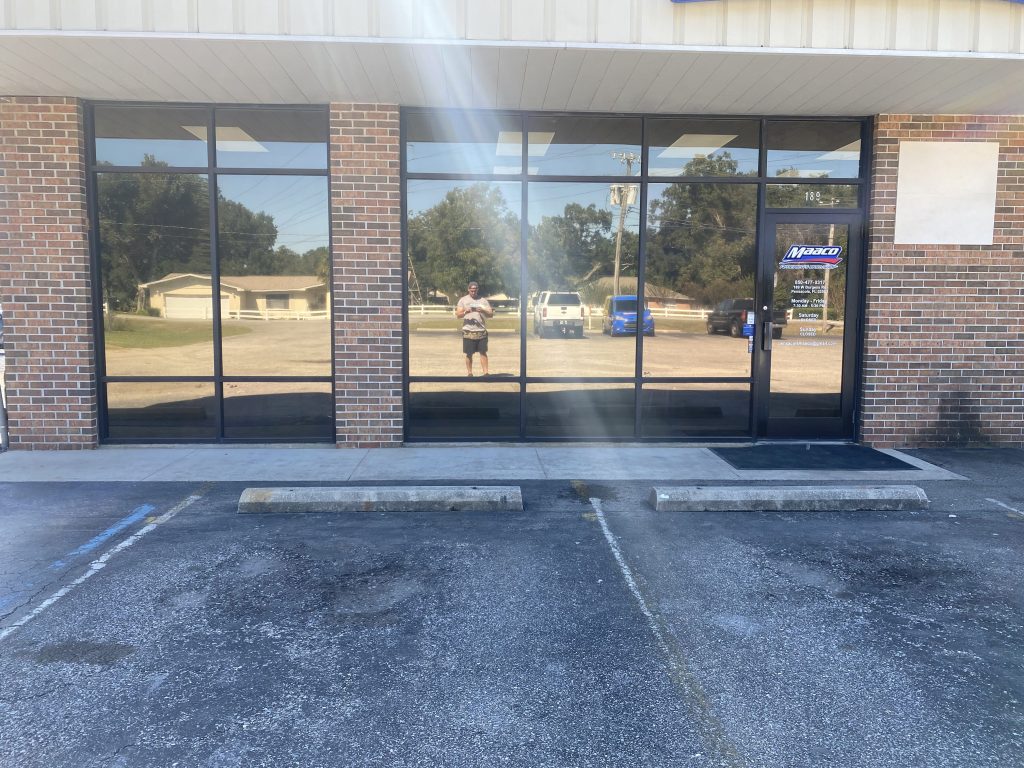In today’s environmentally conscious landscape, businesses are increasingly seeking sustainable solutions to reduce their carbon footprint and lower operational costs. While implementing energy-efficient lighting and HVAC systems are common strategies, many overlook the significant impact that commercial window tinting can have on energy consumption. By harnessing the power of window tinting, businesses can unlock substantial energy savings while simultaneously enhancing the comfort and functionality of their workspace.
Harnessing Solar Energy Management
One of the primary ways that commercial window tinting contributes to energy savings is through effective solar energy management. Windows are notorious for allowing heat gain during the summer months and heat loss during winter, leading to increased reliance on heating and cooling systems to maintain comfortable indoor temperatures. However, by applying window tinting, businesses can significantly reduce solar heat gain, thereby minimizing the workload on HVAC systems.

Tinted windows act as a barrier against the sun’s rays, blocking a portion of the solar heat that would otherwise penetrate into the building. This helps to maintain a more stable indoor temperature, reducing the need for excessive cooling and heating. As a result, businesses can experience lower energy bills and reduced demand on HVAC systems, leading to long-term cost savings and environmental benefits.
Commercial window tinting serves as a proactive measure to combat the effects of solar heat gain, which is a major contributor to increased cooling costs, particularly during the hot summer months. By applying specialized window films, businesses can effectively block a significant portion of the sun’s infrared radiation, which is responsible for generating heat.
This solar energy management process involves selecting the appropriate type of window tinting based on factors such as the building’s orientation, the climate of the region, and the desired level of visible light transmission. High-performance window films are engineered to selectively filter out infrared wavelengths while allowing visible light to pass through, thus maintaining a comfortable indoor environment without compromising natural daylighting.
By reducing the amount of solar heat entering the building, commercial window tinting helps to alleviate the burden on HVAC systems. This results in lower cooling demand, reduced runtime for air conditioning units, and ultimately, decreased energy consumption. As a result, businesses can enjoy substantial savings on their utility bills while simultaneously reducing their carbon footprint and environmental impact.
Moreover, the benefits of solar energy management extend beyond mere energy savings. By minimizing the reliance on mechanical cooling systems, window tinting helps to extend the lifespan of HVAC equipment, reduce maintenance costs, and enhance overall system efficiency. Additionally, by maintaining a more consistent indoor temperature, businesses can create a more comfortable and productive work environment for employees, further contributing to operational efficiency and performance.
In essence, harnessing solar energy management through commercial window tinting represents a proactive and sustainable approach to energy conservation. By leveraging the power of advanced window film technology, businesses can optimize their building’s energy performance, enhance occupant comfort, and reduce their ecological footprint—all while realizing tangible cost savings and long-term sustainability benefits.
Enhancing Thermal Efficiency

In addition to managing solar heat gain, commercial window tinting also enhances the thermal efficiency of windows, thereby reducing heat transfer and improving insulation. The film used in window tinting helps to trap heat inside during colder months and prevent heat from escaping, effectively creating a thermal barrier that minimizes energy loss.
By bolstering the thermal performance of windows, tinting allows businesses to maintain a comfortable indoor environment without overreliance on heating systems. This not only reduces energy consumption but also enhances occupant comfort and productivity by eliminating drafts and cold spots commonly associated with inefficient windows.
Maximizing Natural Light
Another key benefit of commercial window tinting is its ability to maximize the utilization of natural light while minimizing the associated heat and glare. Tinted windows filter out harsh glare and distribute sunlight more evenly throughout the space, reducing the need for artificial lighting during daylight hours.
By harnessing natural light, businesses can reduce their reliance on electric lighting, thereby lowering energy consumption and associated costs. Additionally, exposure to natural light has been shown to have positive effects on employee well-being, mood, and productivity, further enhancing the overall workplace environment.
Conclusion
In conclusion, commercial window tinting offers a compelling solution for businesses seeking to improve energy efficiency and reduce their environmental impact. By effectively managing solar heat gain, enhancing thermal efficiency, and maximizing natural light, window tinting delivers tangible benefits that translate into significant energy savings and operational cost reductions.
As businesses continue to prioritize sustainability and responsible resource management, investing in commercial window tinting emerges as a smart and impactful strategy. Not only does it contribute to a greener bottom line, but it also enhances the comfort, functionality, and overall quality of the workspace. Contact us today to explore how commercial window tinting can transform your business into a more energy-efficient and environmentally friendly operation.






